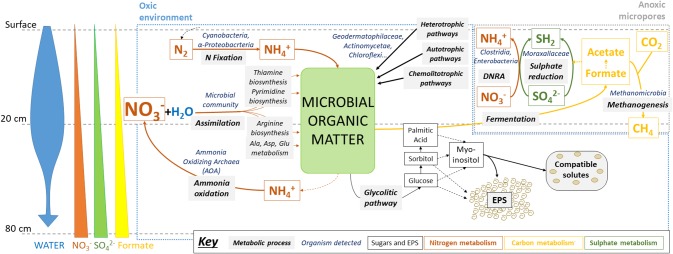Figure 7.
Microbial metabolisms in swallow subsurface of Atacama Desert playa environment after rainfall. Metabolic pathways were inferred from the results obtained after multi-analytical approach: ion chromatography (IC), sugar detection, high-throughput DNA sequencing, metaproteomics, and immunological detection with LDChip antibody microarray. Water input seems to be the main driver of microbial activity in oxic environments, mainly for N-cycling (orange arrows) and glycolytic pathways (dark thin arrows), as well as in creating anoxic environments, where S- (dark green arrows) and C-cycles (yellow arrows) could be operating, including CH4 production and consumption. See text for further explanation. Microbial groups referred as putatively responsible for metabolic pathways are based on both 16S rRNA sequencing findings and previous studies that determined their metabolic capabilities (see section “Discussion”).

